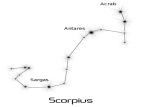| |
Abstract |
Within the sheltered creeks of C?diz bay, Ulva thalli form extended mat-like canopies. The effect of solar ultraviolet radiation on photosynthetic activity, the composition of photosynthetic and xanthophyll cycle pigments, and the amount of RubisCO, chaperonin 60 (CPN 60), and the induction of DNA damage in Ulva aff. rotundata Bliding from southern Spain was assessed in the field. Samples collected from the natural community were covered by screening filters, generating different radiation conditions. During daily cycles, individual thalli showed photoinhibitory effects of the natural solar radiation. This inhibition was even more pronounced in samples only exposed to photosynthetically active radiation (PAR). Strongly increased heat dissipation in these samples indicated the activity of regulatory mechanisms involved in dynamic photoinhibition. Adverse effects of UV-B radiation on photosynthesis were only observed in combination with high levels of PAR, indicating the synergistic effects of the two wavelength ranges. In samples exposed either to PAR+UV-A or to UV-B+UV-A without PAR, no inhibition of photosynthetic quantum yield was found in the course of the day. At the natural site, the top layer of the mat-like canopies is generally completely bleached. Artificially designed Ulva canopies exhibited fast bleaching of the top layer under the natural solar radiation conditions, while this was not observed in canopies either shielded from UV or from PAR. The bleached first layer of the canopies acts as a selective UV-B filter, and thus prevents subcanopy thalli from exposure to harmful radiation. This was confirmed by the differences in photosynthetic activity, pigment composition, and the concentration of RubisCO in thalli with different positions within the canopy. In addition, the induction of the stress protein CPN 60 under UV exposure and the low accumulation of DNA damage indicate the presence of physiological protection mechanisms against harmful UV-B. A mechanism of UV-B-induced inhibition of photosynthesis under field conditions is proposed. |
|

